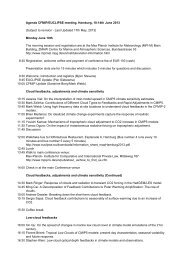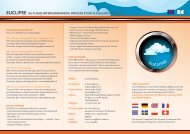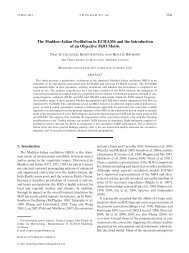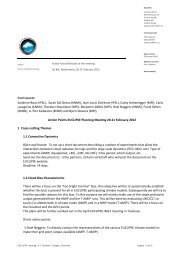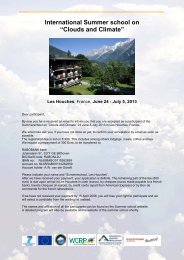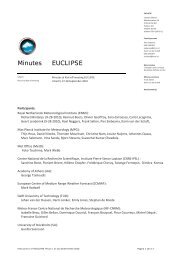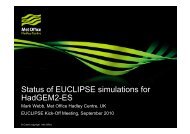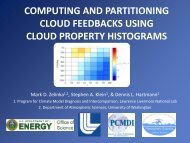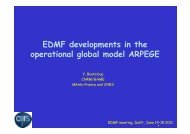EUCLIPSE First Period Report
EUCLIPSE First Period Report
EUCLIPSE First Period Report
Create successful ePaper yourself
Turn your PDF publications into a flip-book with our unique Google optimized e-Paper software.
3.2 Core of the report for the period: Project objectives, work<br />
progress and achievements, project management<br />
3.2.1 Project objectives for the period<br />
The <strong>EUCLIPSE</strong> Objectives are<br />
Project Management:<br />
• Manage efficiently the project.<br />
• Communication between the European Commission and <strong>EUCLIPSE</strong>, including all<br />
forms of reporting specified in the consortium contract agreement.<br />
• Provide the communication tools for the project: public and internal web sites.<br />
• Organise annual general assemblies and project meetings.<br />
• Ensure promotion of clustering and cooperation with related projects (both in<br />
FP7 and other international and national projects).<br />
WP1<br />
• Complete the development of the CFMIP Observation Simulator Package (COSP)<br />
and implement the package in the code of the ESMs that are participating in<br />
CMIP-5 and CFMIP-2.<br />
• Collect existing model evaluation techniques and assess them in terms of their<br />
ability to resolve atmospheric processes responsible for cloud formation and<br />
water cycling. Improve existing techniques and make them available for<br />
application to observational retrievals and to EM output.<br />
• Execute a suite of ESM simulations that include current-climate conditions,<br />
perturbed climate warming conditions, and idealised aqua-planet simulations.<br />
Implement model diagnostics packages that facilitate the application of<br />
process-based model evaluation techniques. Ensure cooperation with related<br />
projects, both in FP7 and in other international and national projects.<br />
WP3<br />
• To conduct dedicated high resolution simulations with Large Eddy Simulation<br />
(LES) models and SCMs that will provide further insight in the cloud dynamical<br />
processes<br />
• To evaluate ESMs experiments with observations for key cloud regimes on<br />
selected locations for present climate<br />
• To analyse the response of boundary layer clouds in idealised and future<br />
climate conditions through the use of LES models and SCMs<br />
3.2.2 Work progress and achievements during the period<br />
WP1: Evaluation Techniques and Climate Model Experiments<br />
7



